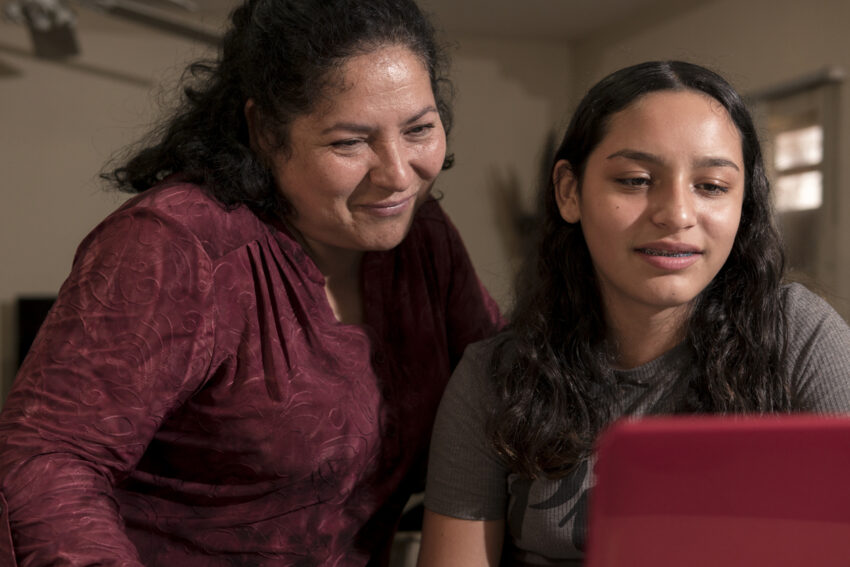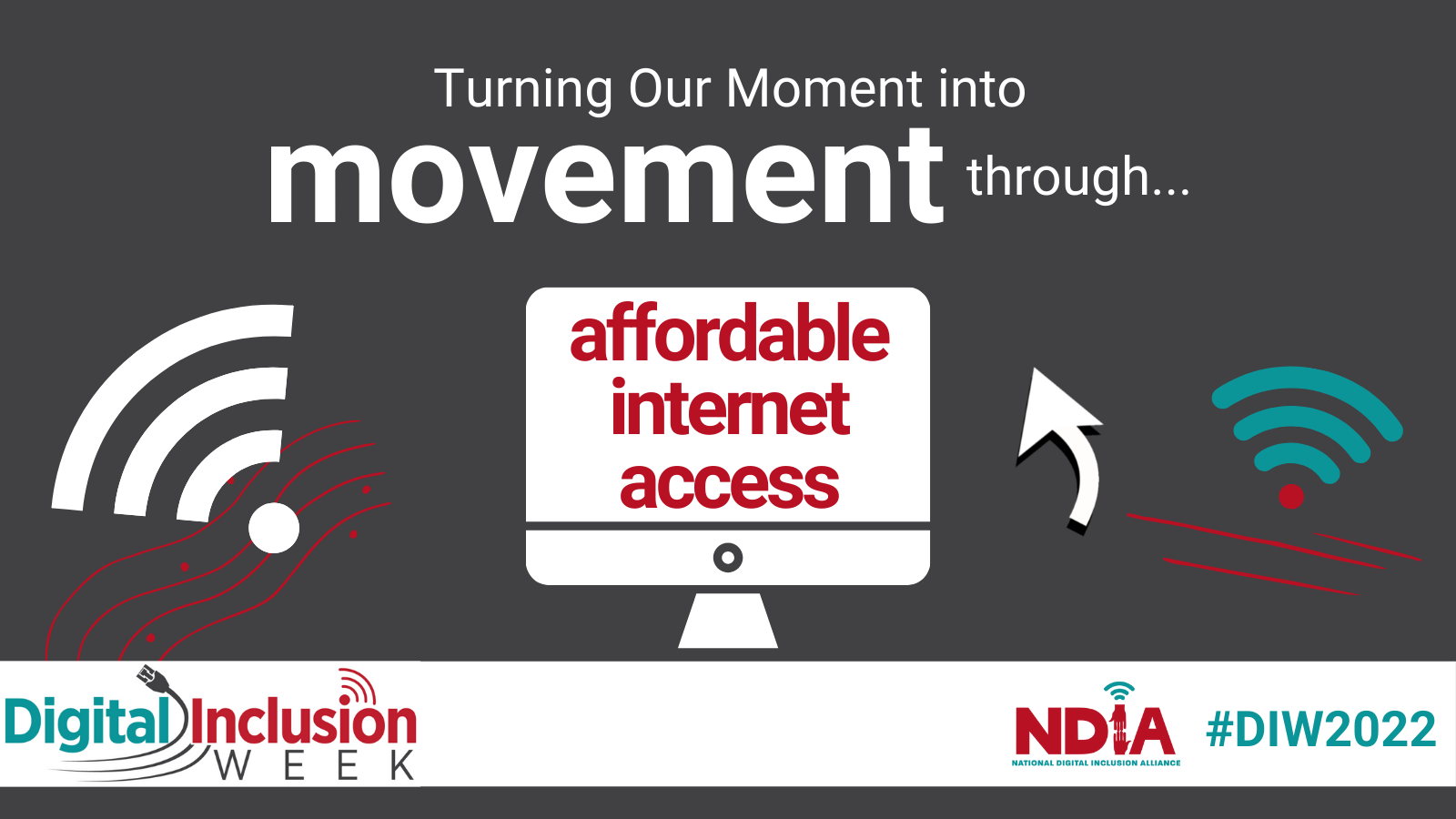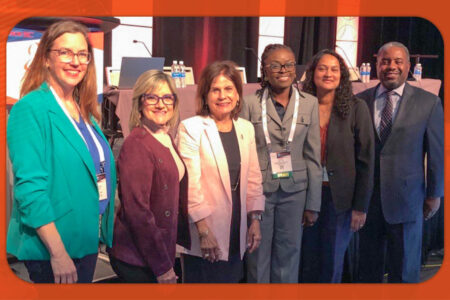
Share On Social!
Today, we rely on the internet for school, work, and even health.
With so many needing internet access as an everyday tool, and populations like Latinos facing a digital divide, digital inclusion and equity is more important than ever!
Digital Inclusion Week aims to bring awareness, recognition, and celebration to promote digital equity throughout communities across the nation.
This year’s Digital Inclusion Week is celebrated Oct. 3-7, 2022, with the theme “Turning Our Moment into Movement.”
Digital Disparities
Digital inclusion means “the activities necessary to ensure that all individuals and communities, including the most disadvantaged, have access to and use of Information and Communication Technologies (ICTs),” according to the National Digital Inclusion Alliance (NDIA).
Many parts of the US are not digitally inclusive for all populations.
For example, 33% of Latino families do not have regular access to the internet, according to a 2020 survey administered by Latino Decisions and Abriendo Puertas/Opening Doors.
The same survey shows that 50% of Latino parents do not have enough computers, laptops, or tablets for everyone in the household.
A Salud America! resource reports, “Latinos, Blacks, and other minority groups who live in a rural area are more likely than their white counterparts to say that accessing high quality broadband is an enormous problem (31% vs. 21%).”
COVID-19 exacerbated these digital inequities.
“The COVID-19 pandemic has further highlighted the gap in digital equity between socioeconomic groups and regions,” according to an article from Lamar University.
Without useful tools like a laptop or a tablet, or proper internet access, those living in rural communities can miss crucial opportunities related to everyday factors like job opportunities and health appointments.
What Does Digital Inclusion Entail?
The NDIA highlights that digital divide is the issue, digital equity is the goal, and digital inclusion is the work.

How do we distinguish these terms?
The Digital Divide Council defines digital divide as “the gap that exists between individuals who have access to modern information and communication technology and those who lack access.”
Factors like income levels and geographic restrictions also contribute to the digital divide.
Digital equity is defined as “a condition in which all individuals and communities have the information technology capacity needed for full participation in our society, democracy, and economy. Digital equity is necessary for civic and cultural participation, employment, lifelong learning, and access to essential services,” according to the NDIA.
In May of 2022, the Hispanic Federation (HF) partnered with Comcast NBCUniversal Telemundo to launch the Latino Digital Equity Centers Initiative to strengthen workforce development and digital training programs in the Latino community.
The initiative includes 20 Latino-led and serving nonprofit organizations across the country that receive grants totaling $635,000 to provide access to digital skills learning.
Digital inclusion is also important and consists of five elements.
- Affordable, robust broadband internet service.
- Internet-enabled devices that meet the needs of the user.
- Access to digital literacy training.
- Quality technical support.
- Applications and online content designed to enable and encourage self-sufficiency, participation, and collaboration.
“Everyone should have the opportunity to participate in today’s increasingly digital economy. Bridging the digital divide that disproportionately impacts Latinos is key to creating economic opportunity in the Latino community and a more equitable society,” said Frankie Miranda, President and CEO of the Hispanic Federation, in a news release.
How can we make progress in achieving digital equity?
Helping Decrease the Digital Divide
Some communities are working on this issue already.
In San Antonio (64.7% Latino), SA Digital Connects (SADC) works as a public-private-community collaboration that have developed a Digital Equity Plan for the city’s home county, Bexar County.
“Affordable and quality internet is foundational to reducing systemic inequities and driving the next generation of societal and economic development,” according to the organization website.
SA Digital Connects has made large strides in finding solutions by implementing a plan through focusing on access and infrastructure, affordability, and adoption in digital skills.
“Bexar County allocated $25 million in American Rescue Plan Act (ARPA) funds to build out broadband infrastructure in underserved communities, while San Antonio has committed $7 million in ARPA grants for digital inclusion,” according to the SA Report.
SADC also has the Affordable Connectivity Program (ACP) which provides a discount of up to $30 per month toward internet service for eligible households.
The ACP also allows for eligible households to receive a one-time discount of up to $100 to purchase a laptop, desktop computer, or tablet from participating providers if they contribute more than $10 and less than $50 toward the purchase price.
SADC encourages San Antonio/Bexar County Community Organizations to use the ACP Toolkit and Enrollment Guide to assist residents in signing up for the ACP benefits.
While progress is being made to close the gap, we can also strive for change and encourage health equity for Latinos.
Download the Salud America! Health Equity Report Card to access what health equity looks like in your community.
See what poverty, healthcare, transportation, and other resources look like in your area and compare them to other counties and states throughout the nation.
You can help advocate for your neighbors and present the Health Equity Report Card to your city’s leadership!
GET YOUR HEALTH EQUITY REPORT CARD!
By The Numbers
23.7
percent
of Latino children are living in poverty



